I can’t go on, so I give in
–Big Audio Dynamite, “Rush”
Gotta get myself right outta here
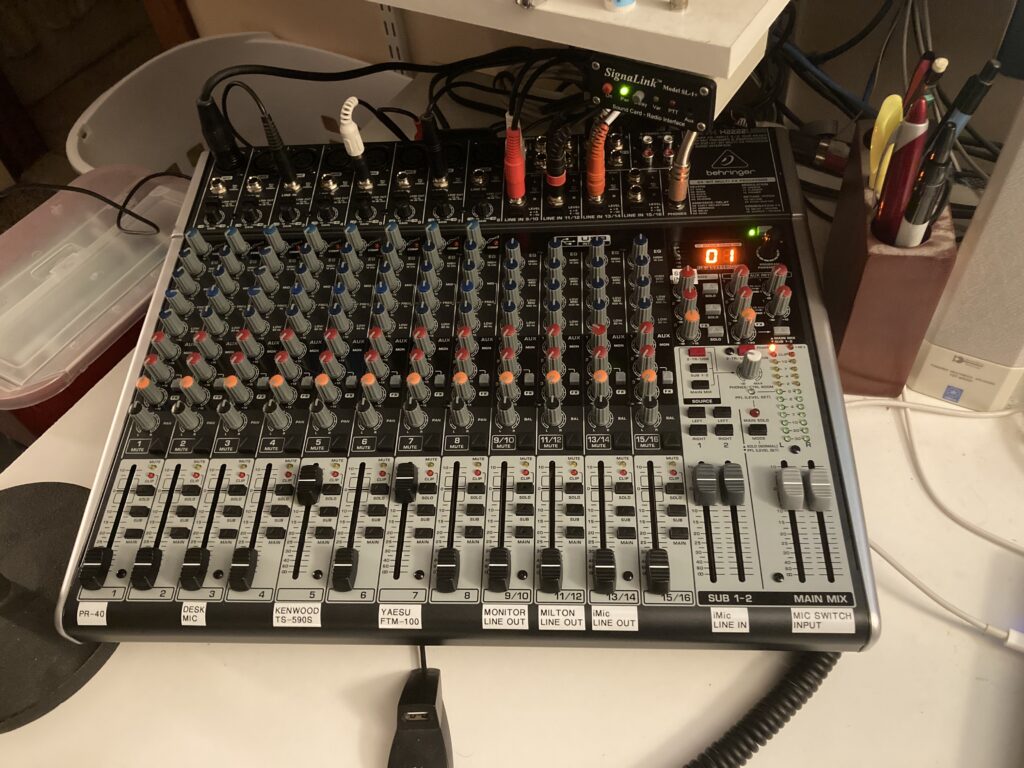
Finally, everything is where it belongs. As mentioned previously, I had received a mixer for Christmas but found a problem with it and swapped it for another. That one had a problem too, and then I got a different one completely. That one had a problem, and I realized those problems weren’t a problem at all if I did things a little differently, but then it had another problem. It was returned for another, and then I waited. And waited. And waited. After about a month I asked the vendor if they could tell me anything about availability, and they said they could not, but offered to change my gift card (which they created while waiting for the restocking) into a normal refund to my original payment method. I agreed with that and thanked them for their help, and then made the order with another vendor that had them in stock. And that one arrived last week. After work I unpacked everything and made quick work of getting things connected yet again – a bit easier of a task since I had everything noted down in Joplin for where things will go and all the appropriate settings – and after testing as I went I even made up the new labels for all the channels and got everything squared away. At last!
Last night after everyone went to bed, I started fiddling a little. One thing I was unsure of is the audio levels from the mixer into the mic input of the radios. I do have a roughly 40dB T-pad in line there that should be making the audio level decent, but I was afraid that it might be too hot now that I am connecting it differently. On the old mixer, I used the Aux Send 2 (post-fader) rail to feed the T-pad and my microphone switch input, which meant anything was mixed down to mono to head there. But on the first mixer I tried to put here, Aux Send 2 was now used as an input to the effects processor. I could still use it if I wanted to, but that meant if I wanted any effects I would have to choose which to use it for at the moment, and if I wanted any effects to go into the radio (no idea why I’d want to, but it’s a possible option) I wouldn’t be able to. So I thought, why not use the main mix output? Well, by default it’s stereo, so truthfully I should use something to mix that down to mono. But then again, what would possibly come out of all this that would be stereo? Well, the only thing that is likely to be stereo in the mixer at any time is music, and I won’t be playing music into the radios, so that’s not an issue. Anything else I can or should be able to mix down to mono as it comes in. So, I simply and arbitrarily chose the left channel to feed the pad and the radios.
The issue would then be, is the audio level OK? Audio checks are very subjective – you’re not only depending on your transmission, but the other person’s reception, and their perception of it all. I don’t like that kind of variability, I’d prefer something a little more … scientific. Or at least subject to my own opinion! So first I went to websdr.org to find a device somewhere that would hear my signal. Neat thing about websdr locations, you can usually record a short bit and have it sent to you, so not only can you hear what it sounds like live, you can play it back and compare it. So I found one that heard me, made a couple recordings at a couple different microphone gain levels, and downloaded them to my computer. Only… they sounded pretty much the same. I noticed, however, that the automatic level control (ALC) meter on the radio was bouncing quite a bit at one gain level, and didn’t move at all at the other. ALC is used when the audio signal going into the mixer in the radio is too high and needs to be attenuated a little so it doesn’t overdrive later stages. If you’re running digital modes, you don’t want that meter to move at all – if it is, you’re overdriving things and since those signals are steady you can and should turn the input to the radio down until the meter doesn’t move or else it might distort things. But for voice, you want it to be there a little bit, because it means you’re driving with enough power to fully load the radio’s later stages. Turn the audio down a little, and maybe some of your voice won’t be loud enough to fully drive power output; turn it up too high, and you’ll saturate things and start clipping and creating bad audio.
To solve this, I loaded a webpage that lets me generate a constant tone. 400Hz works fine for this purpose, and I sent it to a different output of the computer and therefore input to the mixer. I could then adjust it so that the level coming into the mixer would be just around 0dB, as “normal audio” should be going into it. Next, turn the radio’s power down as low as possible since I don’t need to really transmit anything over the air for this test (a dummy load would be better, but I don’t have one and would have to swap cables around to use it anyway – limiting test transmissions to as short as possible, and as low a power as possible, is also good practice). Finally, hit the button to adjust mic gain and key up the radio. Now as I adjust the setting, I can see what the ALC meter is doing, and since the audio going into it is steady it’s easy to tell if I’m on track with my adjustment or not. I set it so that it got a little less than 30% of deflection, meaning with a 0dB audio signal it would be just a little too high for the mixer stage in the radio and need to be attenuated a little. Now, turn off the audio tone and try it with voice, and huzzah! I could see the ALC moving while I talked, but didn’t see it hitting more than about 60% meaning there’s still room to attenuate if I get loud, but I’m fully driving the radio’s amplifier with the most audio I can. That’s a lot more scientific than “how’s my audio sound?”!
Last, I wanted to do something similar for the Yaesu VHF/UHF radio. Unfortunately it doesn’t have an ALC meter to look at, but I can very easily listen to its output. I pulled out an audio cable and adapter and plugged my handheld into the mixing board, then routed that audio to a different input on the computer. Fired up Audacity and told it to record on that input only when there’s a signal present, then turned the FTM-100 down to low power and made a few tests. Plain FM, low mic gain and normal mic gain. Then C4FM, normal and low. Listened back, and normal gain not only was louder and easier to hear, but it didn’t sound distorted at all. I probably should have tried high, and then tried it with the stock mic as well.. maybe that’ll be an experiment for another time.
So, everything is finally done. New mixer is in place and working extremely well – I’m happy to have real mute buttons, and two extra rails (one new and one newly opened up). I’m using three of the four stereo inputs already, but don’t really have a plan for the fourth yet though I’ve had an idea or two for the future. I’ve got four mono inputs available as well for things I might want to do. It’s every bit as versatile as the old setup, and quite a bit more. And let’s be honest… it looks freaking awesome.





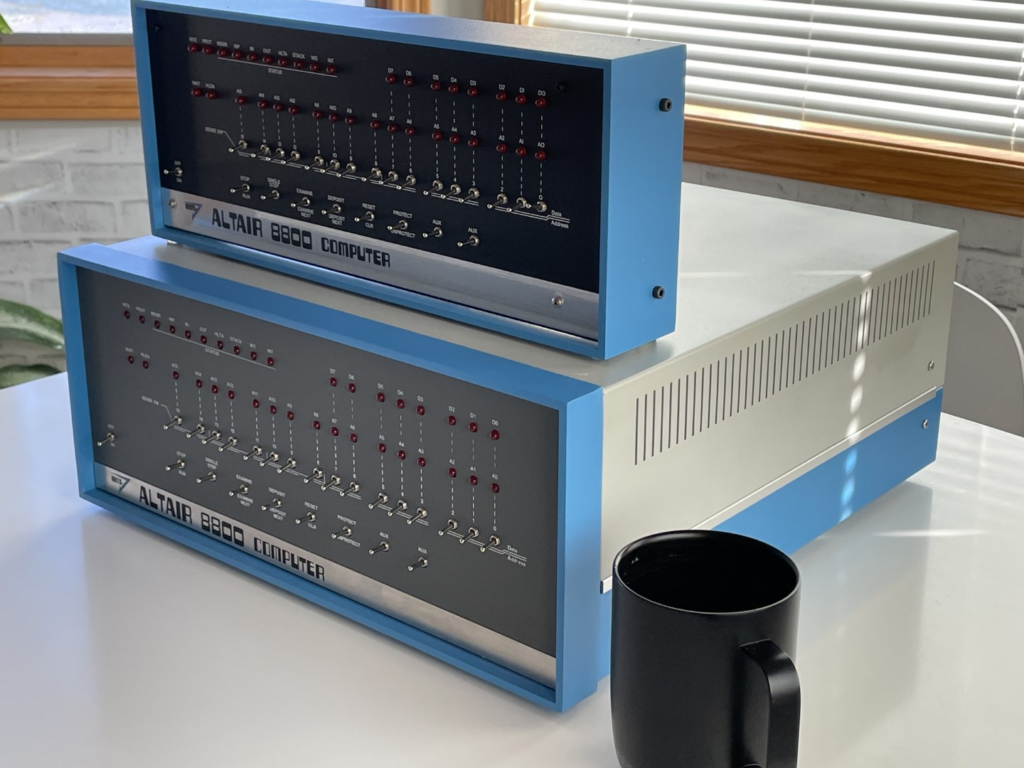
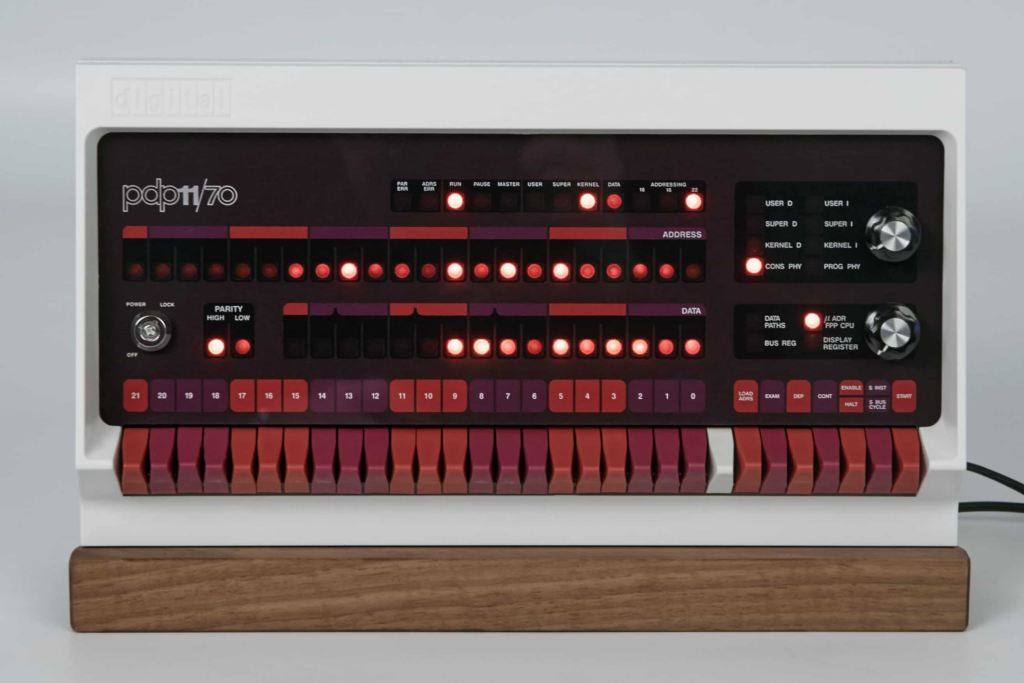

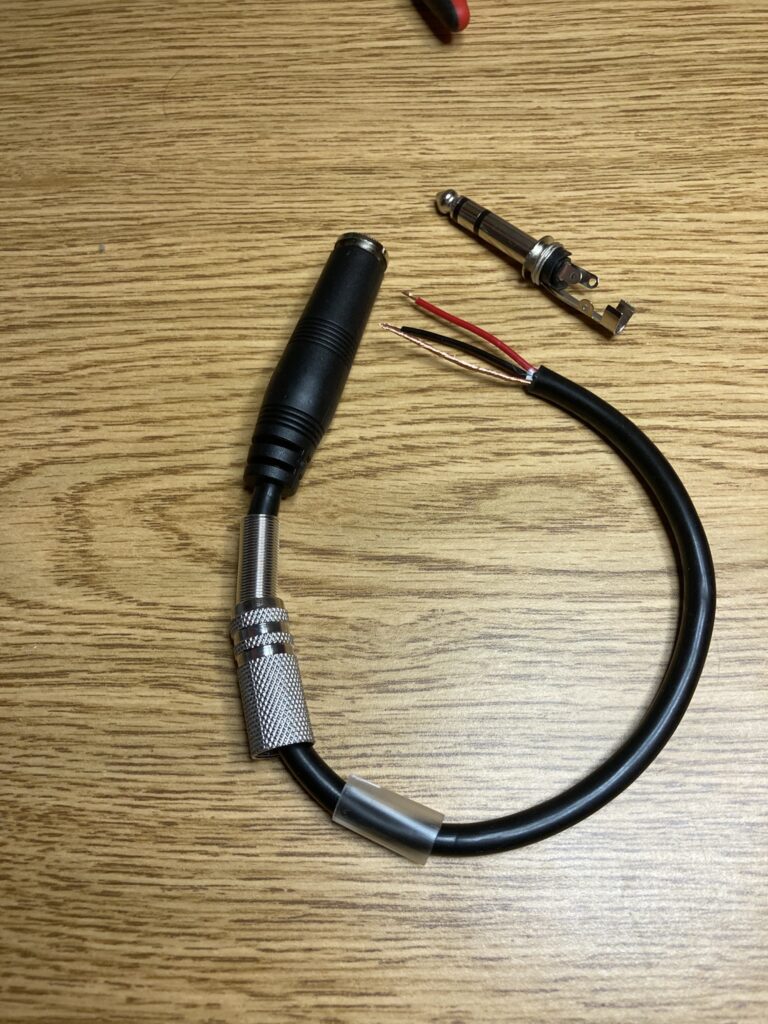
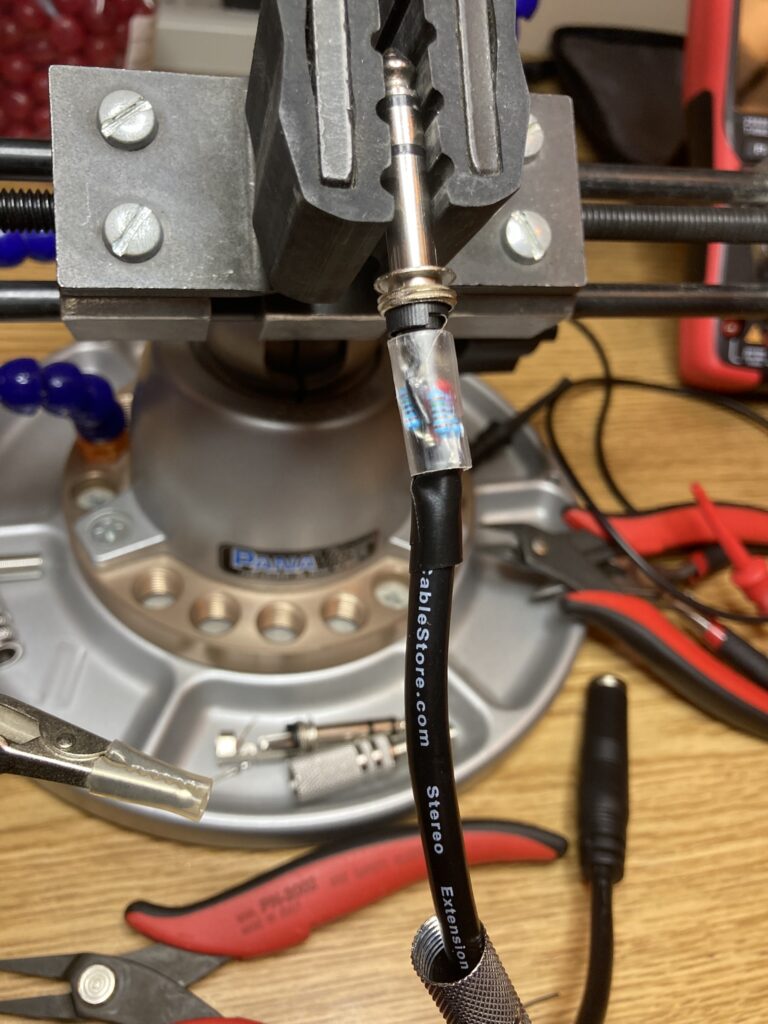
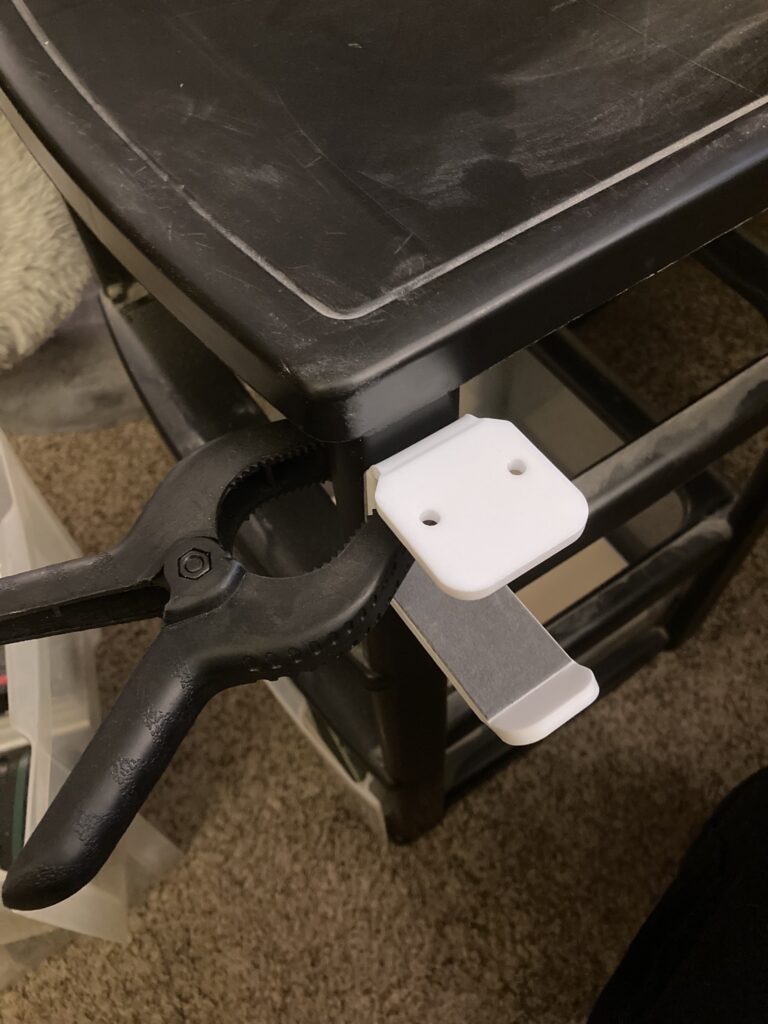


Comments
Join the conversation on Bluesky